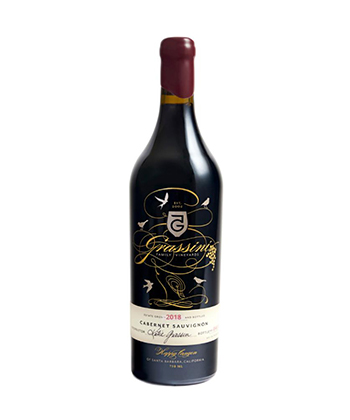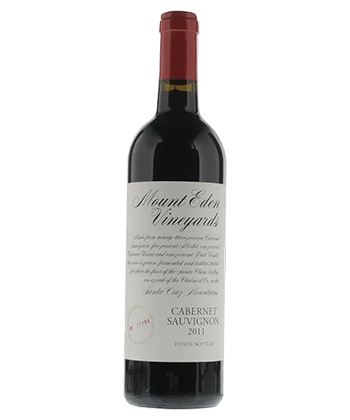As grapes go, few are more well known or widely available than Cabernet Sauvignon. As one of the most planted red grape varieties across the globe, it’s a go-to grab for many weekday wine drinkers. High-quality versions can be a focal point on the table and help turn an ordinary dinner into an unforgettable meal. And in a few instances, they can sit contently on cellar shelves for decades, waiting for their time to shine.
Across the globe, Cabernet Sauvignon is perhaps best known for its dominant role in cool-climate Left Bank Bordeaux. Elsewhere, its popularity is widespread across Spain, Italy, Australia, Argentina, and, of course, the United States.
Stateside, there’s no argument that Cabernet Sauvignon from the Napa Valley holds the hearts of many, with its robust fruit flavors and elegant tannin structure. The stellar reputation of Napa Cab often demands prices in excess of $100 — sometimes wildly more. However, the grape shows incredible success in other parts of the country, fortunately, at more attainable price points.
We asked eight wine pros to share what they think is the best American Cab that’s not from the Napa Valley. Here are their expert recommendations.
The Best American Cabernet From Beyond Napa, According to Wine Pros
- Grassini Family Vineyards Cabernet Sauvignon
- Avennia Red Willow Cabernet Sauvignon
- DeLille Cellars Four Flags Cabernet Sauvignon
- Woodward Canyon Artist Series Cabernet Sauvignon
- Mount Eden Cabernet Sauvignon
- Leonetti Cellars Cabernet Sauvignon
- Substance Cs Cabernet Sauvignon
- Woodward Canyon Old Vines Cabernet Sauvignon

“At the top of my list is Santa Barbara. Santa Ynez and Happy Canyon grow some fantastic Cabernets. Some of my favorite producers include Grassini Family Vineyards, Carhartt Family Wines, Pegasus Estate Winery, and Westerly Wines. There’s so much to explore!” —Casleah Herwaldt, owner, By The Stem Wine Club

“I’ll start by saying, dollar for dollar, I think Washington Cabernet Sauvignons generally outperform the Napa Valley (change my mind), so it’s difficult to pick just one. Still, the Avennia Red Willow Cabernet Sauvignon is the confluence of old-vine fruit from a magical vineyard in the hands of a winemaking wizard, Chris Peterson. It’s shocking that 100 percent Cabernet Sauvignon can have this much aromatic detail and mouth drama. It’s an aroma molecule blizzard and a flavor tsunami that will age for decades. If this wine were from Napa, it would easily be five times the cost.” —Chris Horn, director of liquids, Heavy Restaurant Group, Seattle

“As a Canadian Vancouverite, Washington State offers an alluring trip south. Woodinville’s charming ‘strip malls but make it wine’ concept is a shorter trip than B.C.’s Okanagan Valley. It is here that I first tried DeLille Cellars Four Flags Cabernet Sauvignon. With grapes sourced from the coveted Red Mountain AVA, this wine offers a sturdy, robust style of Cabernet — although one aimed at wine lovers, not hedonists looking for grape juice to chew. Its constituent parts, acid, tannin, body, are well in balance, and it takes well to new oak barrels. With 25-plus vintages under their belt, these folks know what they’re doing.” —Matthew Landry, sommelier and owner, Tannin Management Ltd, Vancouver, British Columbia

“The best Cabernet Sauvignon from America, not from Napa Valley, is being produced in the Columbia Valley of Washington State. Columbia Valley is an expansive appellation carved out by the ancient Missoula floods thousands of years ago. That event has left Washington with a varying array of soil types that promote world-class Cab. My suggestion is to taste Woodward Canyon ‘Artist Series’ Cabernet Sauvignon or Old Vines Cabernet Sauvignon and DeLille’s Four Flags Cabernet, Red Mountain AVA, for some amazingly elegant examples of the region.” —Alisha Blackwell-Calvert, certified sommelier and independent consultant, St. Louis

“South of San Francisco and tucked into the hills just eight miles west of Apple HQ, one finds a winery that produces Cabernet Sauvignon to rival any in the world: Mount Eden Vineyards. Established by Martin Ray in 1943, the vineyards are an island on a mountaintop. The dry-farmed vines are surrounded by wilderness, and you can see it in the wine itself — notes of pine forest, sage, black currant, and blackberry abound. The old-school structure is firm and precise. Mount Eden Cabernet Sauvignon deserves to be on any list of the best Cabs in the world.” —Jonah Beer, winegrower, Pilcrow Wine, Napa Valley, Calif.

“A particular standout is Leonetti Cellars Cabernet Sauvignon from Walla Walla, Wash. Its immense presence shows a consistent concentration for the region, amplified by the low yielding, high-elevation vineyards under the Leonetti family’s care. Given time, the power and density give way to a remarkable elegance carried by a bright acidity balancing the dark fruit. Built to evolve in the cellar, I prefer them 10 to 15 years from the vintage. Living in a warm climate, I typically drink lighter-bodied wines, but when I have an opportunity to enjoy a Cab from Leonetti, it makes for a very memorable occasion.” —Rae Wilson, founder and winemaker, Wine For the People, Austin, Texas

“The Substance ‘Cs‘ Cabernet Sauvignon from Columbia Valley in Washington State is one of the best in the ‘daily drinker/under $20’ category. In a blind, I would have probably thought it to be closer to $50. It shows complex classic Cabernet Sauvignon flavors that often get baked out in favor of fruit ripeness, so the flavors of tobacco leaf, black currant leaf, and cigar box are quite delightful and exciting to observe. It drinks like you would expect from a typical Napa Cab, with plush, rounded tannins and ripe black cherry and blackberry fruit characteristics on the palate, but the wine still retains elegance and freshness.” —Lindsay Pomeroy, owner, Wine Smarties, San Diego

“I have to represent my state of Washington, as I think we have some of the most conducive conditions in the U.S. to consistently produce wines of incredible quality. Woodward Canyon ‘Old Vines’ Cabernet Sauvignon is a blend of the choicest plots of old vines across the state, most of which were planted back in the 1970s. The structure and density of this wine are remarkable, but not without compelling aromatics and texture in its youth. I’ve been lucky enough to taste several examples with age, and they only improve. I have yet to taste a tired one. Bravo!” —Chris Tanghe, director of education, GuildSomm
